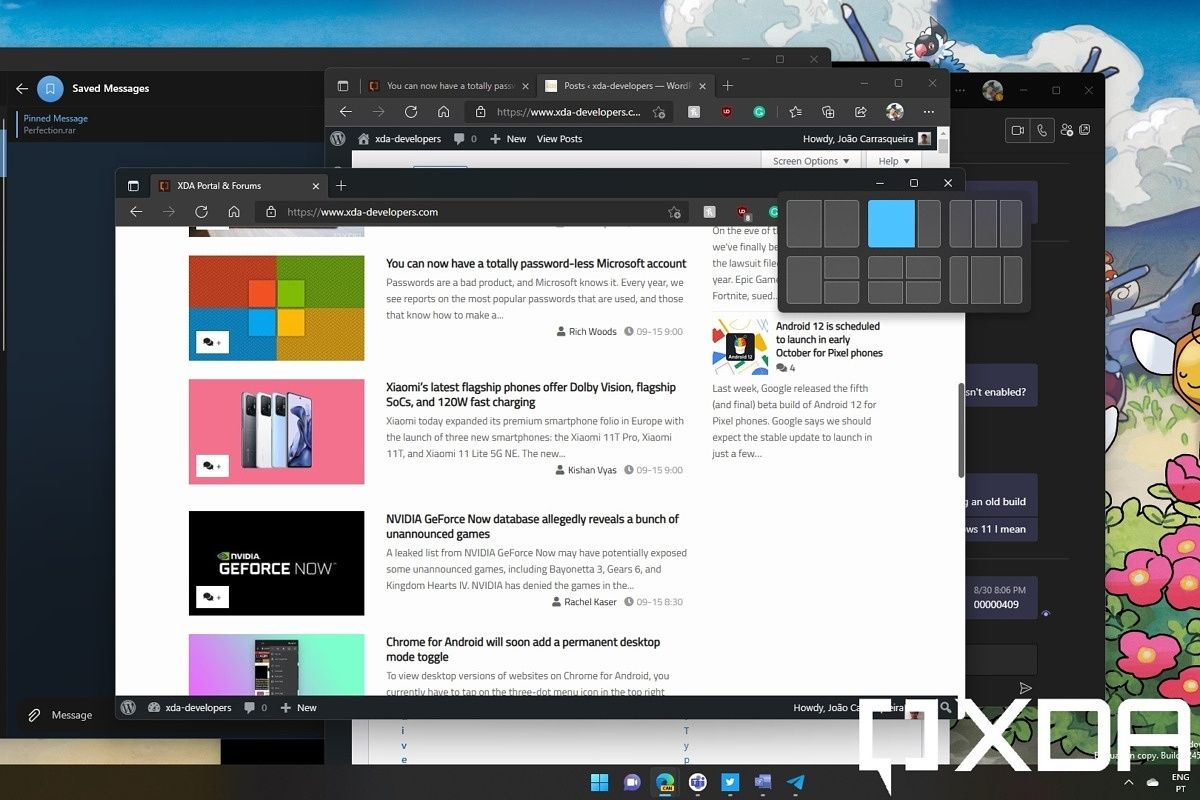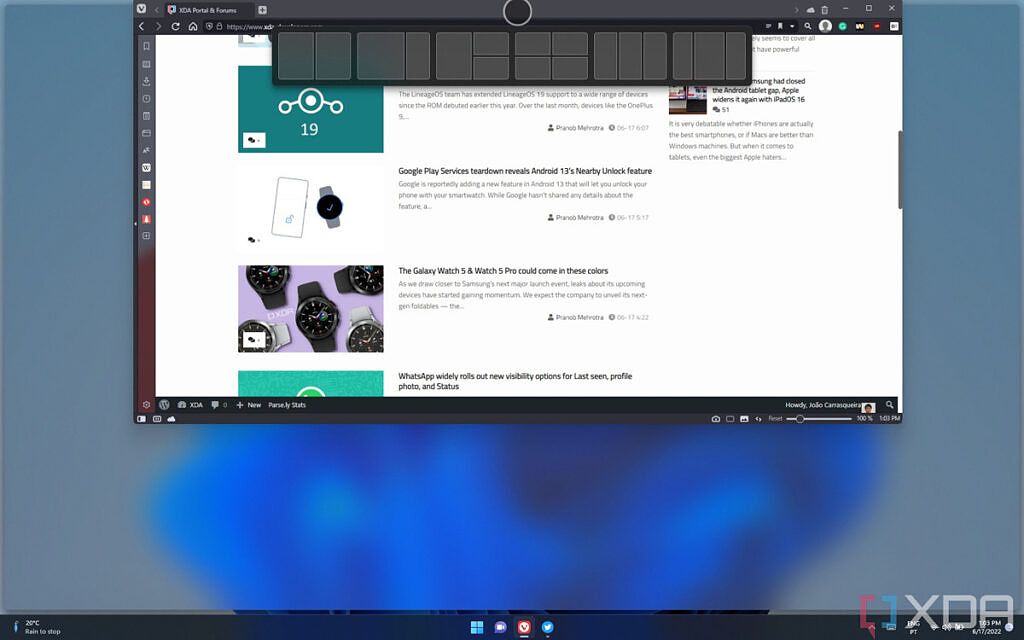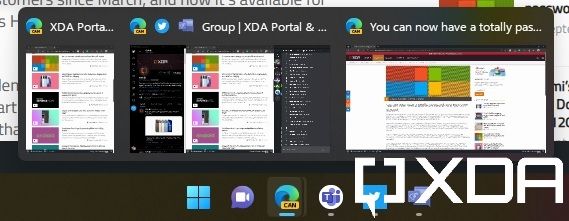Windows 11 is now widely available, but it's still new for many of us. While Windows Insiders are continuously testing new features in preview, most users won't know everything that's new. We're here to help by giving you a look at what's new in Windows 11. This article will focus on Snap Layouts and Snap Groups, two new multitasking features in Windows 11.
These two new features build on top of Snap Assist, which was one of most useful features in Windows 10 (personally speaking, at least). While that gave you some options for easily snapping windows next to each other, Windows 11 makes it even easier and gives you more options too. Let's take a look at what Snap Layouts and Groups bring to the table.
How to use Snap Layouts on Windows 11
Windows 11 makes snapping apps a much more discoverable experience compared to Windows 10. Before, you could drag an app to the edges of the screen to snap it to the side, or drag it closer to the corners of the screen to split the screen into four. With Windows 11, you can snap much more easily by hovering your mouse over the restore button on an app's title bar. When you do this, you'll see a few recommendations for snap layouts.
These layouts let you organize apps on your screen in different ways, and you can also choose which one of the slots in a layout the current app should take. You'll see different layouts depending on the orientation and pixel density of your monitor, too. These are also far more layouts than you could have on Windows 10. You can have three apps side-by-side, and with different widths too.
Starting with Windows 11 version 22H2, you can also access Snap Layouts by dragging a window to the top center of the screen. This is so you can access the interface more easily with touchscreens, and you can just drop the window into the layout you want.
Once you snap the first app window to a position, Windows 11 will step in to help you finish setting up the layout. You'll be able to choose from your open apps to fill each of the remaining slots in your layout, one at a time.
Once that's done, you can see the apps you want in a single view. It's also worth noting that, while using this mouse hover action is a new way to start layouts, there are new layouts you can create by dragging an app to the edges of the screen. For example, you can drag an app to the top of the screen to maximize it, but if you keep dragging along the top edge, you can snap it to a side (or the center) of the screen in a three-way split.
Snap Groups
Once you've set up your snap layout, Windows 11 saves that set of apps as a snap group. Technically, there isn't much to this, but it's very useful. Say you open another app on top of your snap layout, and you want to quickly get back to the layout you had before. When you move your mouse over one of the app icons on that taskbar, not only will you have the option to restore just that app, you can restore the entire snap group that app is part of. This way, you can quickly switch back to your setup, even if you opened other windows over it.
You can do this with any of the apps that's part of that snap layout, so you don't have to look for a specific one. If an app has multiple windows open, Windows can still remember which one was part of the snap layout. As we said, it's not mind-blowing on a technical level, but it's a super handy feature to have if you're juggling multiple apps at the same time. With Windows 11 version 22H2, snap groups also show up in the task switcher by pressing Alt + Tab.
It's also worth noting that these features work if you have multiple monitors too, so you can have different snap layouts on each monitor, and each of those layouts is saved as a group too.
That's all you need to know about Snap Layouts and Snap Groups on Windows 11. Multitasking and productivity are a big focus of this version of Windows. It also brings new virtual desktop improvements, and using multiple monitors is also better.
If you're interested in upgrading to Windows 11, you may want to check out the system requirements first. You can also try to find out if your PC is on our list of PCs that will support the upgrade to Windows 11.




